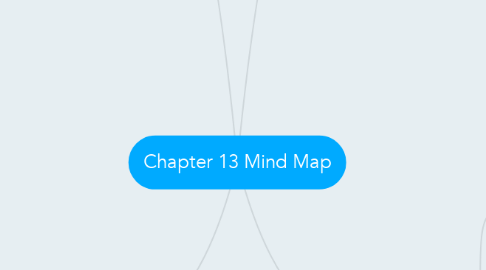
1. Chapter 13.2
1.1. Economists use GDP to calculate the size of the economy. They use Nominal and Real GDP.
1.1.1. Gross Domestic Product (GDP): the market value of all final goods and services produced within a country during a given period of time
1.2. They also use GDP to see if the economy is growing or shrinking, and use it to compare to other countries.
1.2.1. Net Exports: the value of all exports minus all imports
1.3. GDP is limited in the sense it leaves out unpaid work, volunteer work, ignores illegal exchanges, leisure time, and negative externalities, counts negatives as positives, no income distribution.
1.3.1. Informal Economy: a sector of the economy that operates without government regulation or monitoring and is not officially recorded or taxed; the informal economy is not included in the calculation of GDP
1.4. When GDP increases, so does literacy, education, health, life expectancy, and in general the standard of living.
1.4.1. Real GDP: a measure of a country’s economic output (GDP) valued in constant dollars; real GDP reflects the effects of inflation
2. Chapter 13.3
2.1. The Unemployment Rate is a good indicator of how the economy's health is doing.
2.1.1. Unemployment Rate: the percentage of the labor force that is not employed but is actively seeking work
2.2. People who are working are part of the labor force. Those who do not have a job but are looking are called Unemployed. Those who are not working and not looking for a job are considered not part of the labor force.
2.2.1. Frictional Unemployment: a type of unemployment that results when workers are seeking their first job or have left one job and are seeking another
2.3. When the economy has full employment and there are jobs for everyone who needs one yet some are still not working, it is called the Natural Rate of Unemployment.
2.3.1. Natural Rate of Unemployment: the percentage of the labor force without work when the economy is at full employment; a condition in which the economy is strong and there is no cyclical unemployment
2.4. Problems: people who were previously unemployed might have given up on looking for jobs, it does not recognize involuntary part-time workers, and involves people who work informally or underground.
2.4.1. Underground Economy: a sector of the economy based on illegal activities, such as drug dealing and unlawful gambling
3. Chapter 13.5
3.1. A business has four cycles: economic growth (expansion), end of expansion (peak), decline (contraction), lowest part of contraction (trough).
3.1.1. Business Cycle: a recurring pattern of growth and decline in economic activity over time
3.2. A Business Cycle is hard to predict but there are some economic indicators: Leading, Coincident, and Lagging.
3.2.1. Leading Economic Indicators: measures that consistently rise or fall several months before an expansion or a contraction begins
3.2.2. Coincident Cconomic Indicators: measures that consistently rise or fall along with expansions or contractions
3.2.3. Lagging Economic Indicators: measures that consistently rise or fall several months after an expansion or contraction begins
3.3. Boom and Bust are popular words for the business cycle. The Boom is the expansion phase while the bust is the contraction part of the cycle.
3.3.1. Recession: a period of declining national economic activity, usually measured as a decrease in GDP for at least two consecutive quarters (six months)
3.4. A recession is the downswing of the cycle, or the bust. Long periods of time of a recession is a depression.
3.4.1. Depression: a prolonged economic downturn characterized by plunging real GDP and extremely high unemployment
4. Chapter 13.4
4.1. The BLS tracks inflation by getting info on peoples' cost of living.
4.1.1. Inflation Rate: the percentage increase in the average price level of goods and services from one month or year to the next
4.2. Inflation can occur in three ways: Creeping Inflation, Hyperinflation, and Deflation. Hyperinflation is when inflation is in overdrive. Deflation happens when Inflation is Negative.
4.2.1. Consumer Price Index (CPI): a measure of price changes in consumer goods and services over time; the CPI shows changes in the cost of living from year to year
4.3. Inflation can be caused by an increase in demand, money supply, or cost of factors in production.
4.3.1. Demand-Pull Inflation: a rise in the price of goods and services caused by an increase in overall demand
4.3.2. Cost-Push Inflation: a rise in the price of goods and services caused by increases in the cost of the factors of production
4.4. Limits of the CPI: Relies on Consumer, does not look at substitute goods, slow to reflect trends, new product bias, quality change may mess with the system.
4.4.1. Wage-Price Spiral: an upward trend in wages and prices; an inflationary pattern in which rising prices lead to demands for higher wages, causing producers to raise prices further and workers to demand additional wage hikes
